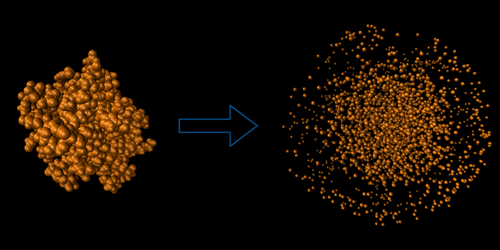Exploding Proteins to Classify Them
With the advent of x-ray free-electron-laser facilities in the late 1990s, the possibility emerged of using their intense pulses to determine the structures of single biomolecules. One of these pulses packs so much energy that it destroys the target molecule, but not until after some of the x rays, having diffracted off the molecule’s atoms, reach a detector. Now Carl Caleman of Uppsala University in Sweden and his collaborators have proposed a complementary method. Instead of diffracted x-rays, the researchers propose recording the exploded molecule’s atomic fragments [1]. Their simulations indicate that the method could reliably classify a variety of proteins by their shapes.
When x rays strike a protein, they excite its constituent atoms, which promptly relax by emitting photons or electrons. The escaping electrons leave the molecule positively charged, and it breaks apart in a so-called Coulomb explosion. Caleman and his collaborators modeled the explosions for six proteins whose structures are known and, for a given orientation, predicted the directions in which the atoms would fly. The explosions are stochastic. By repeating the prediction 500 times for each protein, they built up maps, or “explosion footprints.” They analyzed the footprints using two standard statistical techniques. The method couldn’t recover the proteins’ full atomic structures. However, it reliably classified their shapes, which could be useful for studying proteins that have multiple configurations. Caleman and his collaborators speculate that the combination of explosion footprints and single-molecule diffraction might eventually yield structures with atomic resolution.
–Charles Day
Charles Day is a Senior Editor for Physics Magazine.
References
- T. André et al., “Protein structure classification based on x-ray-laser-induced Coulomb explosion,” Phys. Rev. Lett. 134, 128403 (2025).




